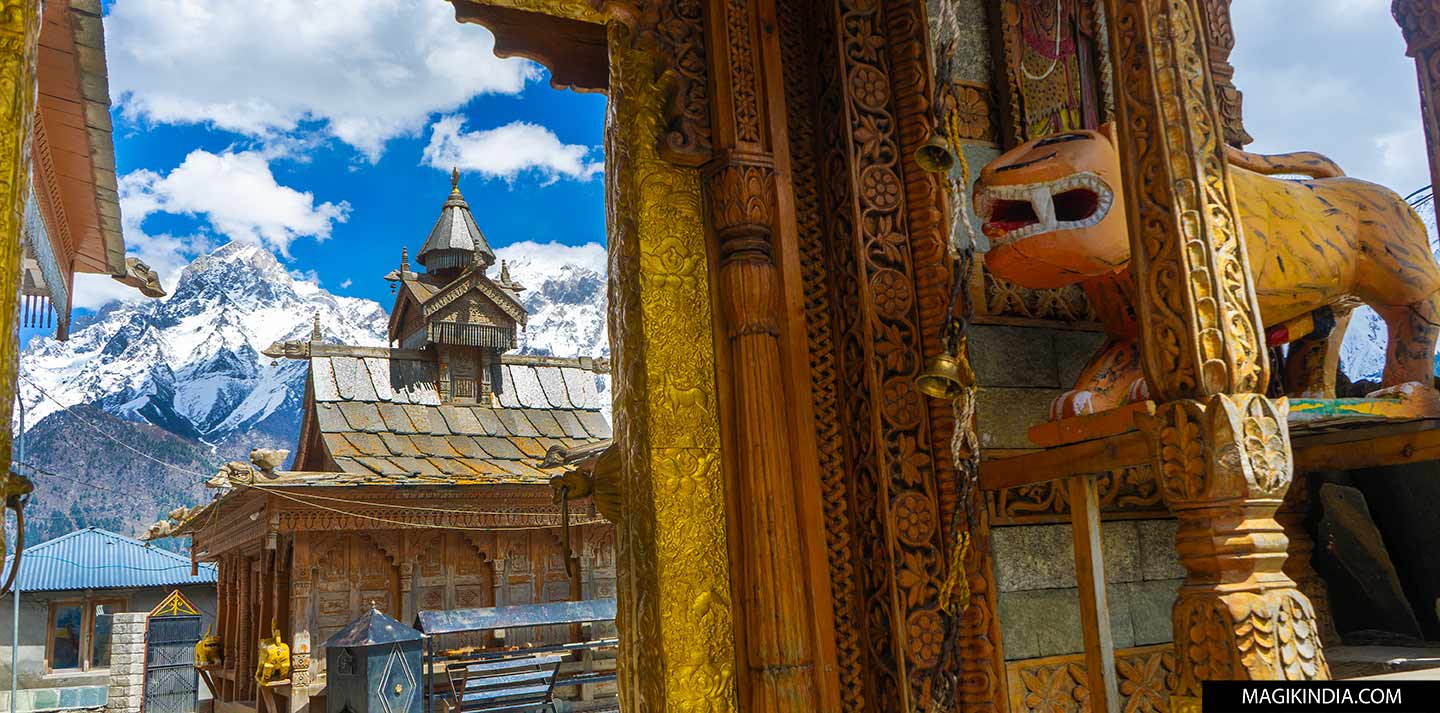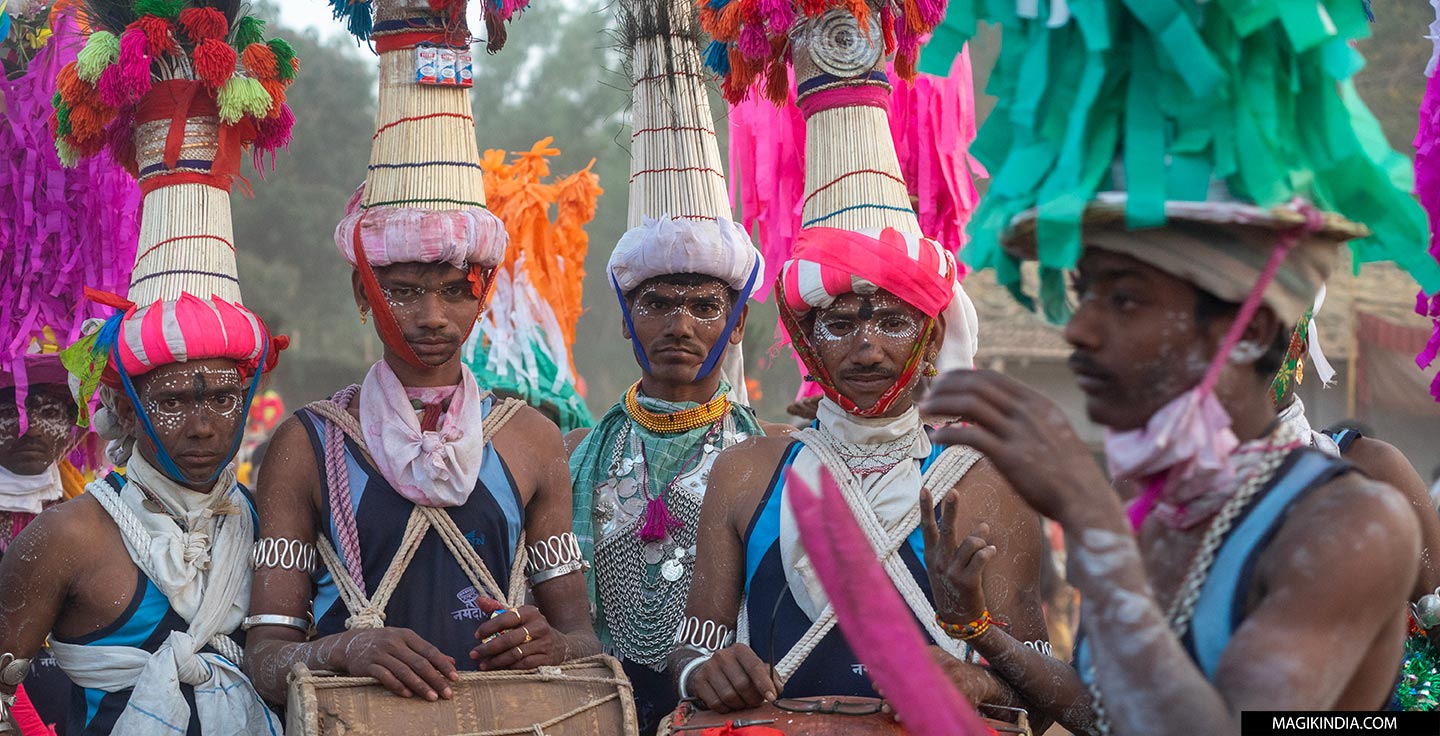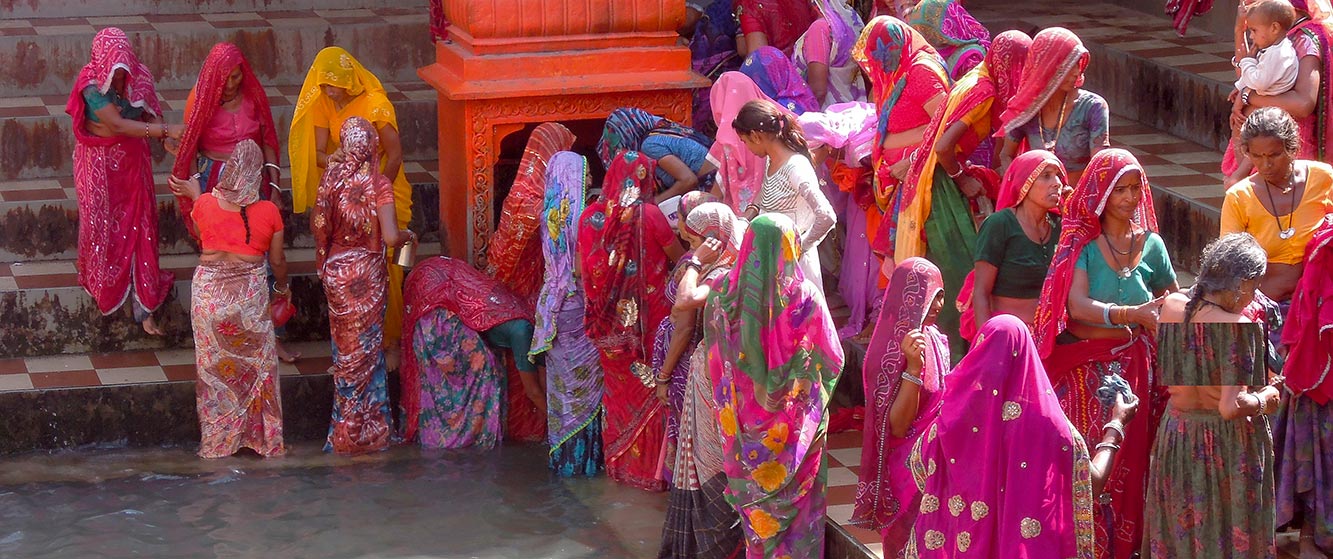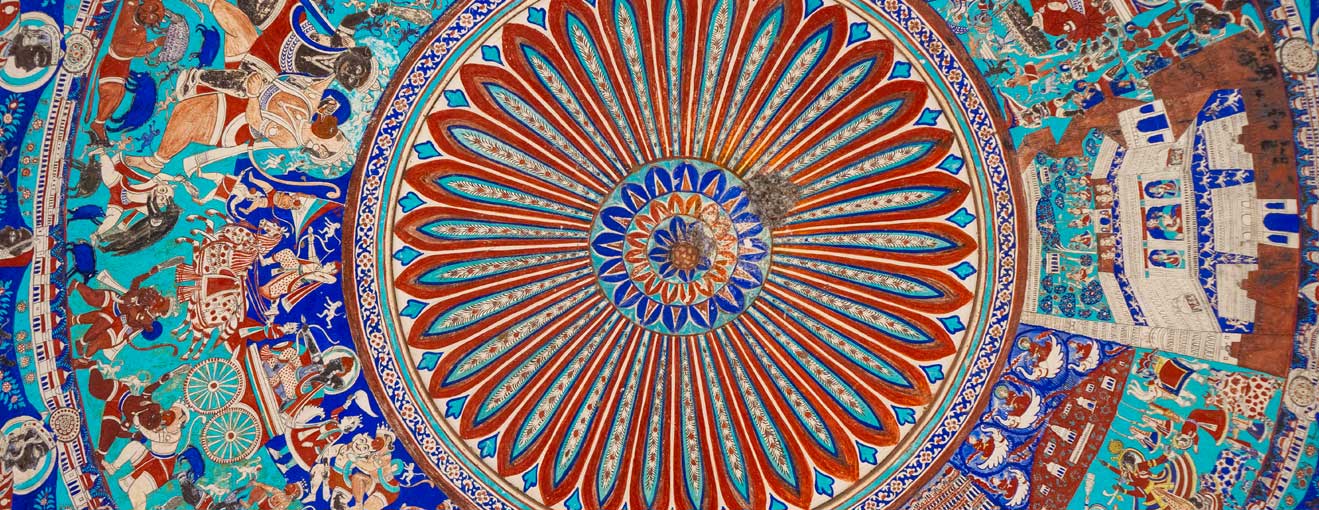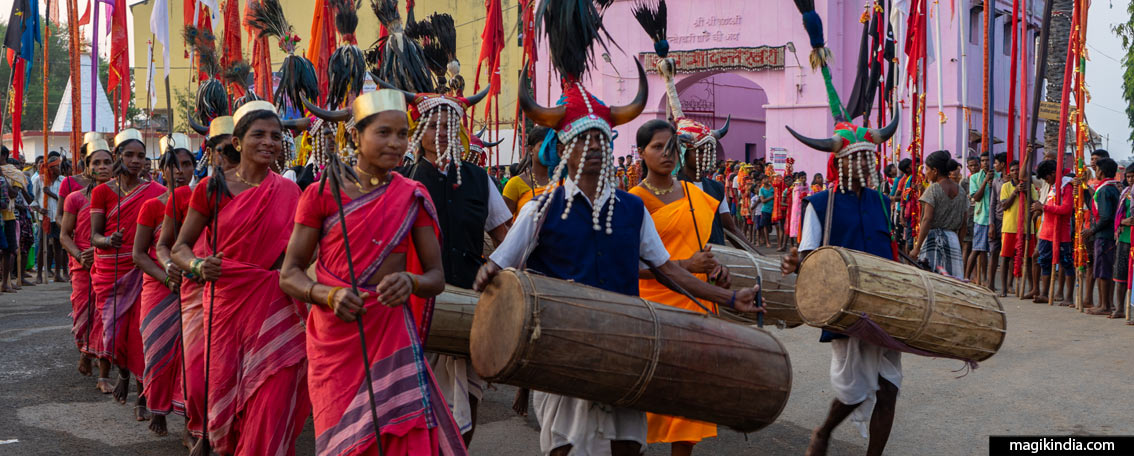
Phagun Madai, the spring festival of the adivasis of Bastar
Along with Dussehra, Phagun Madai is another important festival of Bastar region in the state of Chhattisgarh. It is organized every year in Dantewada, a town located 80 km south of Jagdalpur where 60% of the population is “adivasi”, that is to say of indigenous origin. This 10-day festival, which takes place during the month of Phagun of the Hindu calendar (February/March), celebrates spring and the rich artistic and spiritual culture of the indigenous people of this region.
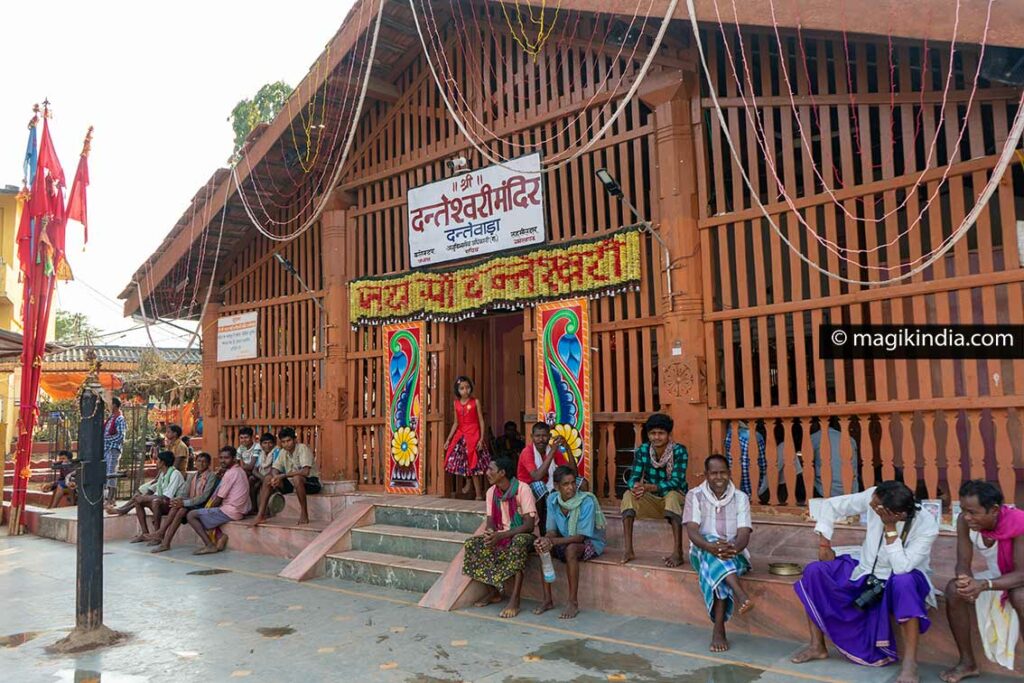
Dantewada is the city of the goddess Maa Danteshwari, patron saint of Bastar and much revered Shakti Peetha: mythology tells that a tooth of Sati, the consort of Shiva, fell here, hence the name of the city “Dantewada” (“dat” meaning “tooth” in Hindi).
Carved from black shale, Danteshwari represents “Mahisasuramardini”, the warrior goddess with six armed arms who fights demons and restores order to the universe.
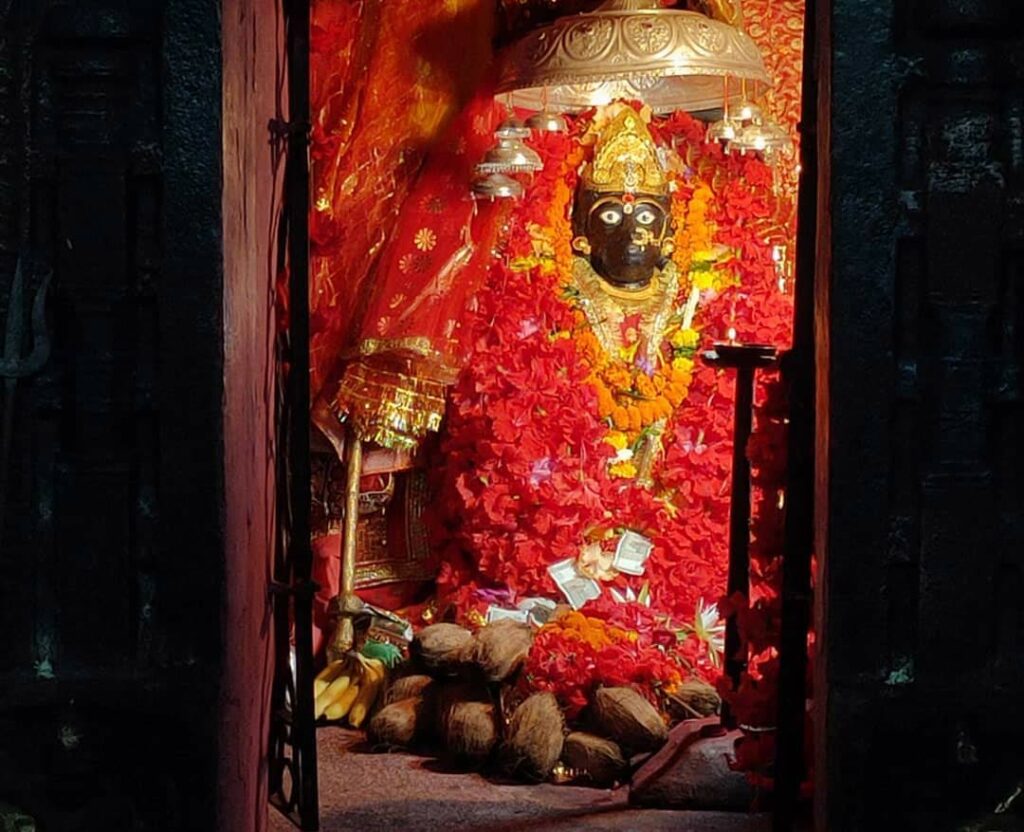
The festival of Phagun Madai is closely related to the goddess, as it is said that during this festival, Danteshwari celebrates the festival of Holi with all her divine sisters from the surrounding villages.
According to other sources, this festival was initiated by Sri Putra Purushottam Dev, the fourth king of Bastar (1468-1534 CE), in order to preserve the tribal culture.
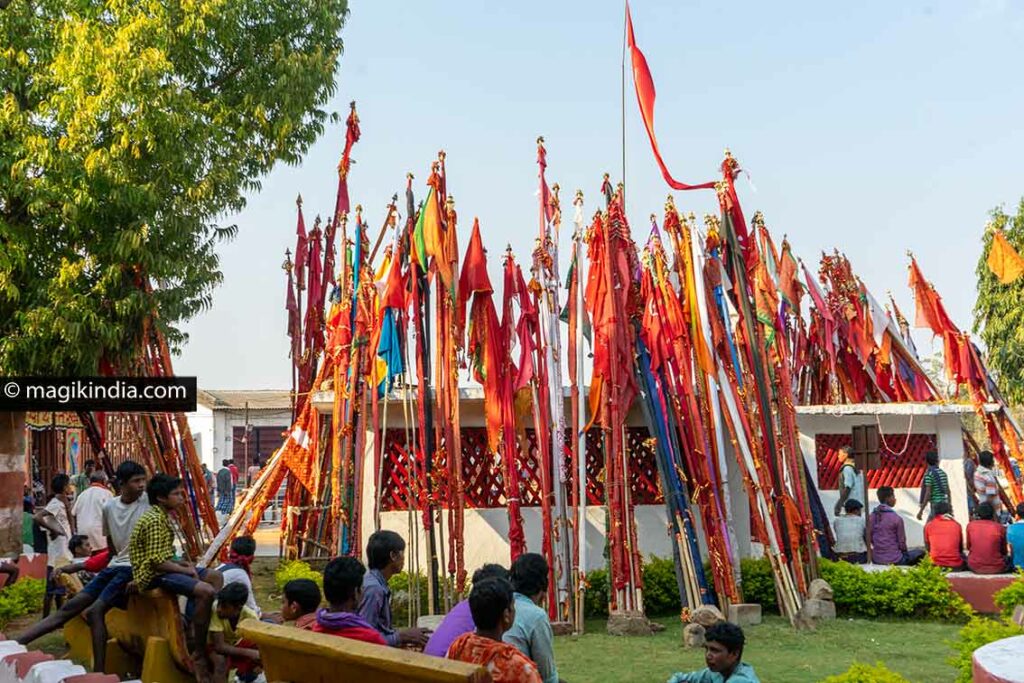
On the occasion of Phagun Madai, a kaleidoscope of ethnic groups from Bastar, but also from Odisha meets at the temple of the goddess with their local deities represented by “anga deo” (kinds of palanquins), “Chhatri” (umbrellas) in silver and flags. They number in the hundreds.
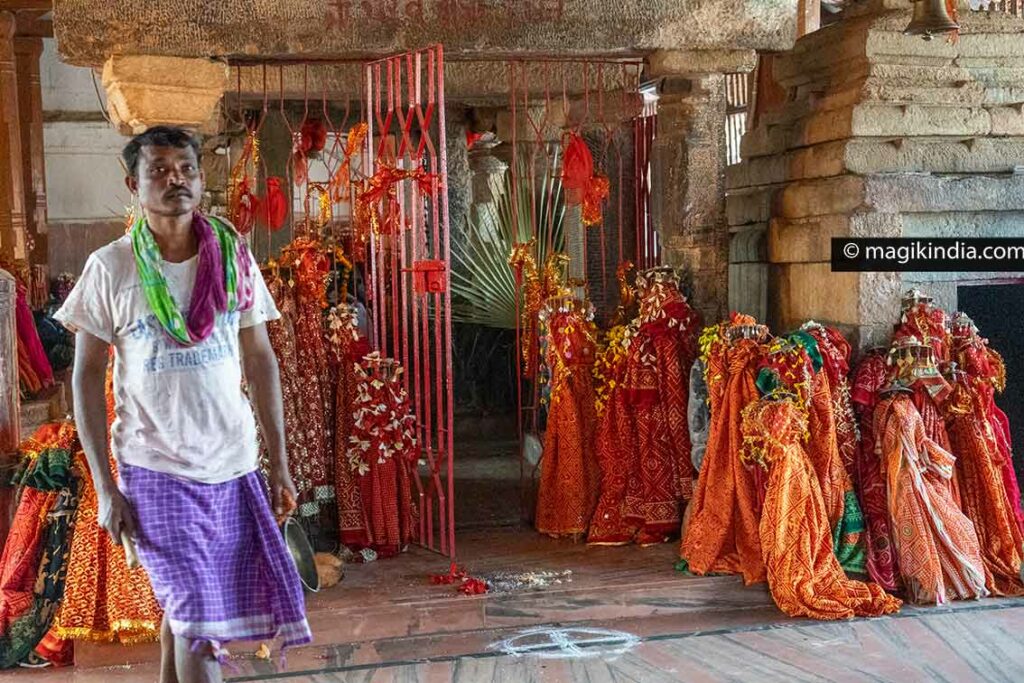
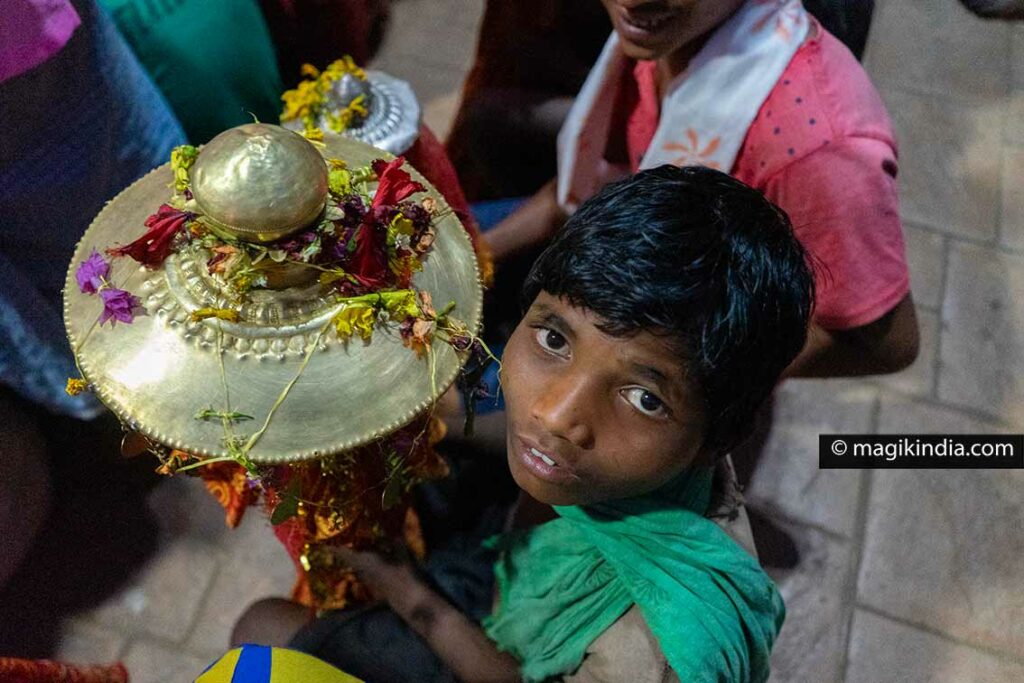
Much like Dussehra Bastar, this festival is a blend of indigenous animist traditions and Hindu rituals. The festivities take place in perfect harmony with the royal family of Bastar and the various representatives of the tribes.
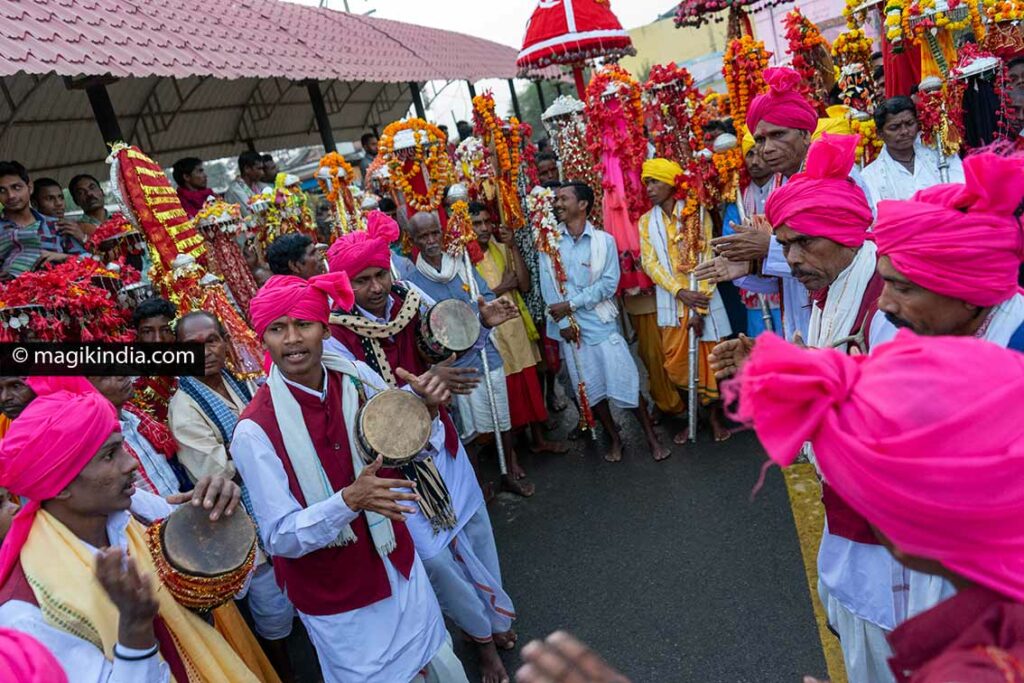
The inauguration of the Phagun Madai festival takes place in front of the Maa Danteshwari temple by burying a wooden pole topped with the “trishul” (trident) of the goddess.
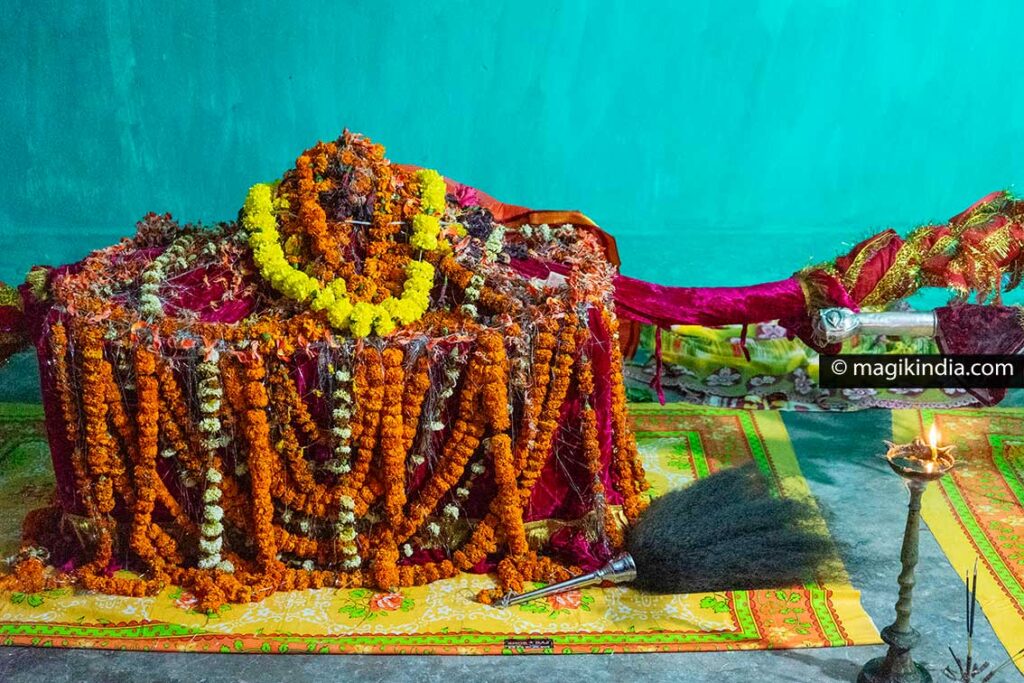
Every day, the palanquin representing Maa Danteshwari is taken in procession to the Narayan temple below accompanied by the tribal deities, the anga deo and their symbols, the flags and umbrellas.
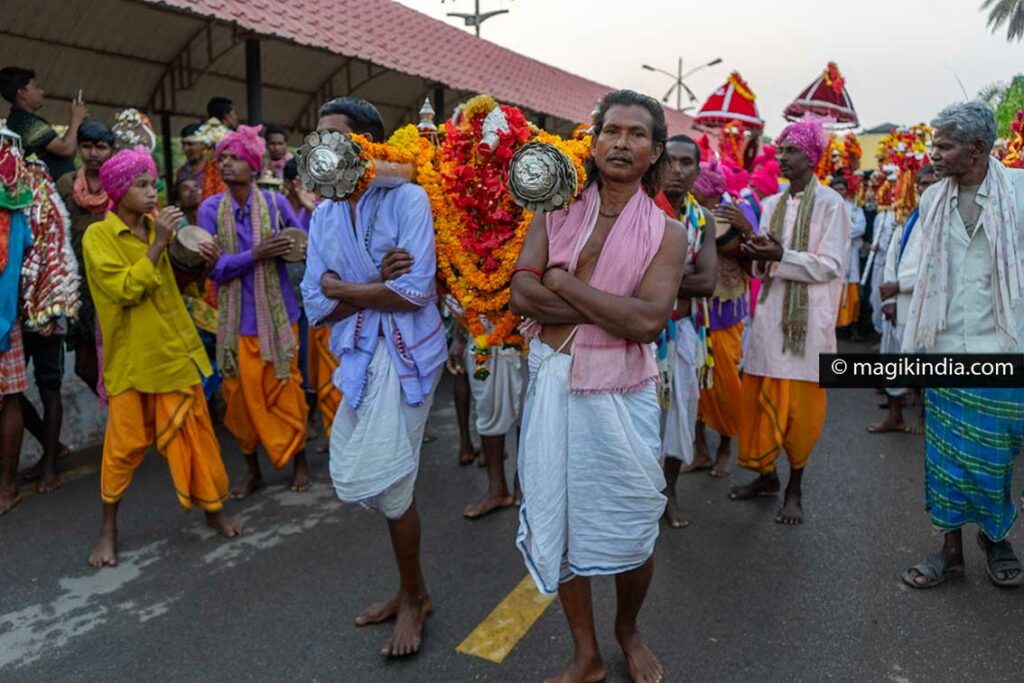
The high priest of the Danteshwari temple as well as the Maharaja of Bastar accompany the procession covered in an original headdress made of bhandarin and mogra flowers. In the evening, after various rituals, the palanquin returns to the original temple.
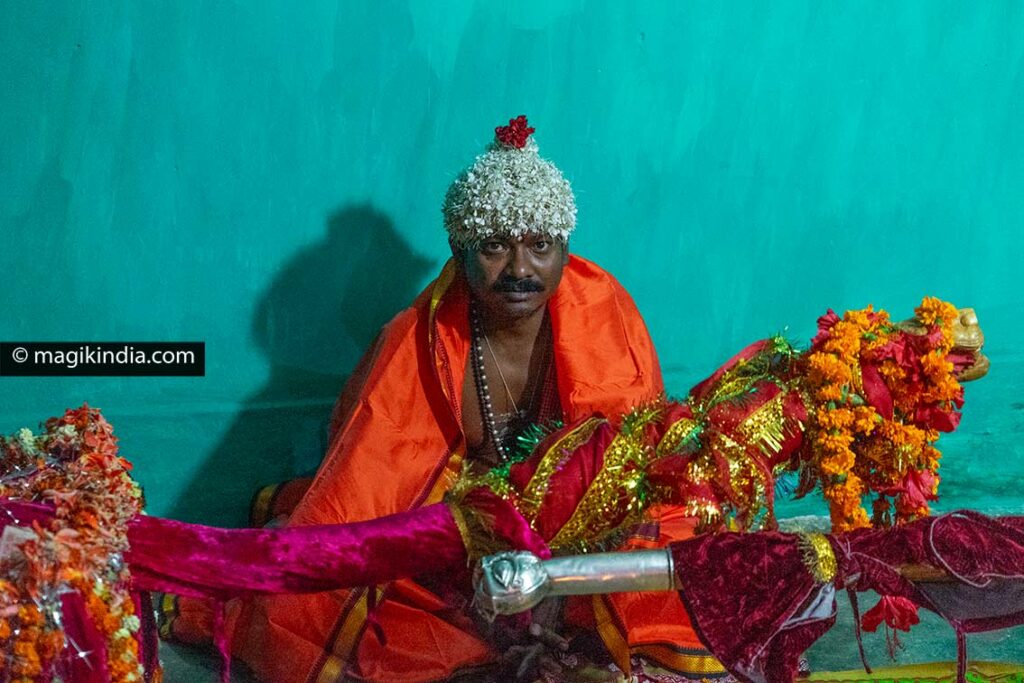
Alongside the worship of the goddess, the artistic traditions of the tribes are highlighted throughout the festival. While outside the temple, men play Mohari tunes (a type of oboe) to the rhythm of dhol and nagada percussion, inside, women sing songs from another world accompanied by musical instruments. “homemade” music: rice baskets and jugs for the sound box and hunting bow as an archer!
In the evening, hunting dances and folk theater take over, such as “Ganwarmar” which involves the symbolic hunting of the “Ganwar” or wild buffalo.
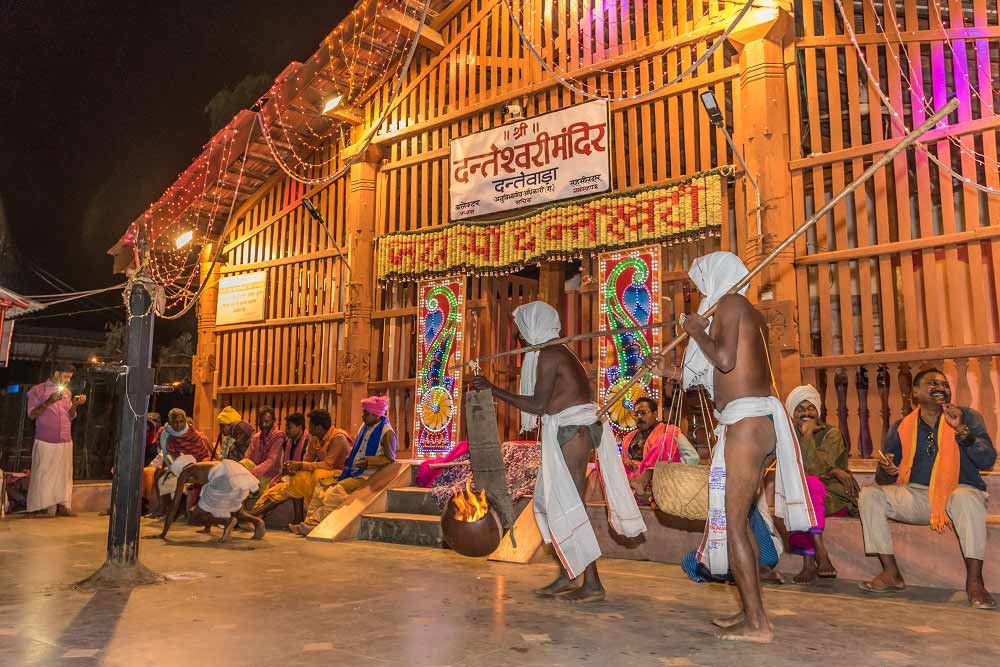
Phagun Madai ends with farewell to the deities. At the end of the day, men rush into the temple to look for their umbrella divinity. Then, the flag bearers form a guard of honor, from the Danteshwari temple to that of Narayan.
The Dandami Maria and their famous rhythmic buffalo dance open the ball; they form several circles in front of the door of the temple of the goddess before going down the aisle to the other temple.
Several processions of palanquins and divine umbrellas follow until nightfall when all participants gather at the Nayaran temple for the final chapter of the festivities. On the menu, songs and dances which, sometimes, are reminiscent of ethnic traditions from other continents, proof once again of the connection between the different peoples of the world.
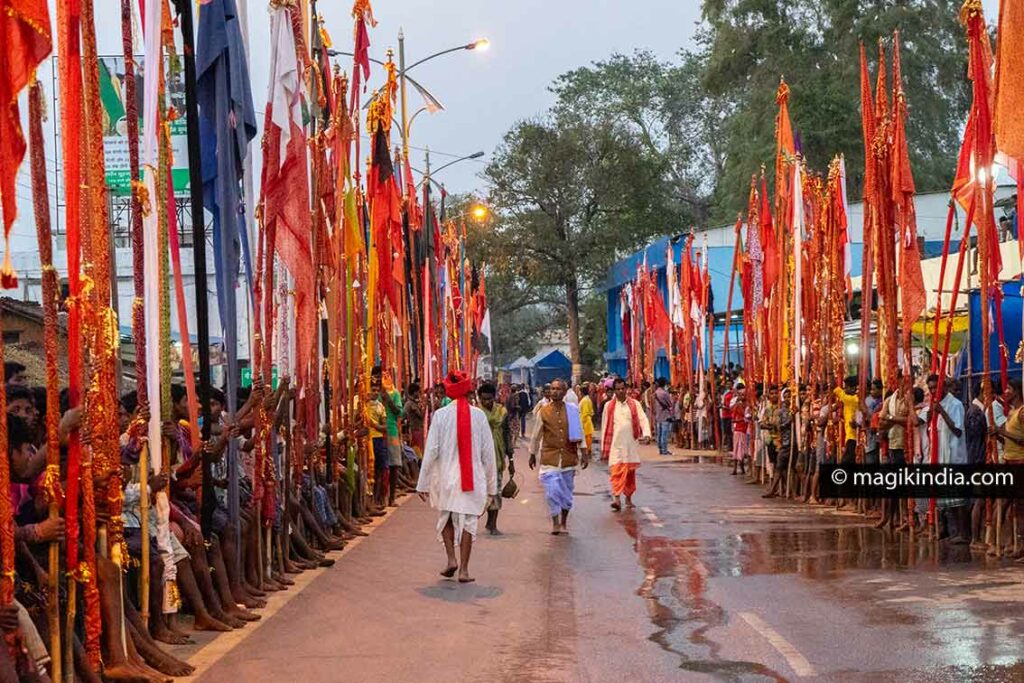
VISIT CHHATTISGARH WITH US!



